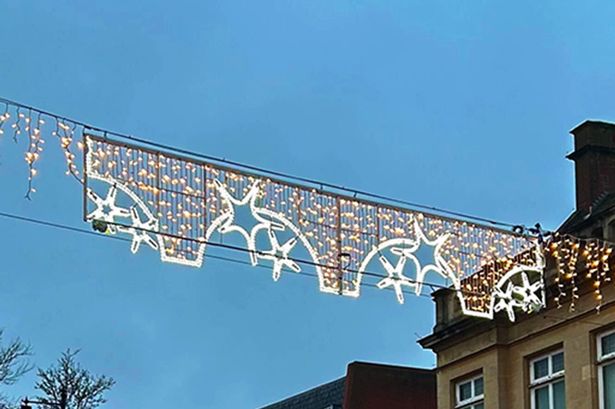The quaint Hampshire town of Fleet has found itself at the center of an unexpected Yuletide controversy. Their festive decorations, intended to evoke the warm glow of traditional lanterns, have instead sparked a heated debate among residents, many of whom perceive the illuminated shapes as something rather different. While the local council maintains that the designs are indeed representative of lanterns, a significant portion of the town’s populace vehemently disagrees, arguing that the decorations bear a striking and unfortunate resemblance to a decidedly more anatomical form. This clash of interpretations has transformed the festive ambiance into a source of amusement, embarrassment, and even outrage, leaving Fleet residents divided on whether to laugh, blush, or petition for their removal.
The controversy began shortly after the decorations were unveiled, their unusual shapes immediately catching the attention of passersby. Social media platforms quickly became forums for lively discussion, with residents posting photos and sharing their bemused observations. The consensus among many was that the decorations, with their bulbous forms and dangling appendages, resembled anything but lanterns. Comparisons ranged from the innocently comical, likening them to oversized Christmas baubles or misshapen snowmen, to the more risqué and unavoidable anatomical parallel. The rapid spread of these comparisons online amplified the issue, drawing attention from regional and even national media outlets, firmly placing Fleet’s festive faux pas in the spotlight.
Adding fuel to the fire was the council’s steadfast insistence that the decorations were, in fact, lanterns. Their official statements, intended to clarify the matter, were often met with skepticism and amusement, further entrenching the divide between the council’s intended artistic vision and the public’s perception. The council’s explanations, focusing on the historical and cultural significance of lanterns in festive celebrations, seemed to fall on deaf ears, as residents continued to point out the glaring discrepancy between the stated intention and the undeniable visual reality. This disconnect between official narrative and public experience fueled the ongoing debate, turning a simple decorative choice into a town-wide saga.
The “lantern-gate” incident, as it has been playfully dubbed by some, has brought about a complex mix of reactions within the Fleet community. While many residents find the whole affair humorous, viewing the decorations as a source of lighthearted entertainment and a quirky talking point, others express genuine embarrassment and frustration. For some, the decorations represent a lapse in judgment on the part of the council, a failure to consider the potential for misinterpretation and the subsequent impact on the town’s image. Concerns have been raised about the potential for the decorations to attract unwanted attention and ridicule, tarnishing Fleet’s reputation and potentially impacting local businesses.
Beyond the immediate reactions of amusement and embarrassment, the “lantern-gate” incident has also sparked deeper reflections on the nature of public art and the importance of community engagement. Some residents argue that the controversy highlights the need for greater transparency and consultation in the decision-making processes surrounding public displays. They suggest that involving the community in the selection and approval of such decorations could have prevented this situation, ensuring that the chosen designs resonate with local sensibilities and avoid unintended interpretations. The incident serves as a reminder of the power of public opinion and the potential consequences of failing to adequately consider the diverse perspectives within a community.
Ultimately, the festive decorations in Fleet, regardless of their intended form, have become a symbol of much more than just holiday cheer. They have inadvertently ignited a conversation about community identity, public perception, and the delicate balance between artistic expression and public acceptability. Whether they are ultimately deemed lanterns, baubles, or something else entirely, their legacy in Fleet will likely be one of unintended humor, a touch of embarrassment, and a valuable lesson in the importance of considering the multifaceted nature of community interpretation when undertaking public art projects. The “lantern-gate” affair has undoubtedly added a unique and unforgettable chapter to Fleet’s history, providing a quirky anecdote to be recounted for years to come.














